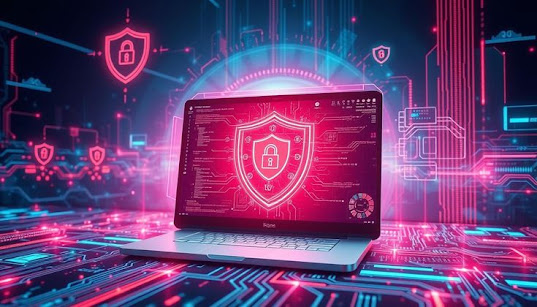Top 10 Cybersecurity Trends to Watch in 2024
Cybersecurity Trends to Watch in 2024
As technology continues to evolve at breakneck speed, so do the cyber threats that exploit it. From the rise of AI-powered attacks to the increasing complexity of securing remote and hybrid infrastructures, 2024 is shaping up to be a defining year for cybersecurity. Here’s a look at the top trends every individual and organization should be aware of.
1. AI-Powered Threats and Defenses
Artificial Intelligence (AI) has become a double-edged sword in the cybersecurity world.
- Cybercriminals are now using AI to automate and scale phishing campaigns, generate realistic deepfakes, and even create polymorphic malware that can change its code to evade detection.
- On the flip side, defensive AI is also gaining ground with real-time threat detection, behavior analytics, and automated incident response capabilities.
AI will be at the center of cybersecurity strategies in 2024, both as a threat and a solution.
2. Deepfakes and Synthetic Media Threats
Manipulated media has moved beyond entertainment. Today’s deepfakes are increasingly used for malicious purposes—such as impersonating executives to authorize wire transfers or creating believable disinformation to manipulate public opinion.
Voice cloning and video fraud are growing areas of concern, especially for enterprises and governments.
3. Managing the Expanding Attack Surface
The digital world is more connected than ever, with cloud services, IoT devices, mobile endpoints, and hybrid work systems creating thousands of new entry points.
Companies must focus on attack surface management and strong cyber hygiene practices to stay ahead of threats.
4. The Shift Toward Zero Trust
Trusting no one, whether inside or outside the network, has become the new norm. In 2024, more businesses will adopt Zero Trust Architecture (ZTA) to reduce the impact of internal threats and stolen credentials.
Zero Trust means verifying every access request using strict authentication, least-privilege policies, and continuous monitoring.
5. Advanced Identity and Access Management (IAM)
Passwords are no longer enough. Expect a wider rollout of:
- Passkeys and biometric logins (like fingerprints or facial recognition)
- Phishing-resistant Multi-Factor Authentication (MFA)
- Identity Threat Detection and Response (ITDR) to stop misuse of credentials
These measures strengthen access control and reduce the success of social engineering attacks.
6. Cloud Security Gets Smarter
Cloud adoption isn’t slowing down, but neither are the threats. Misconfigurations remain a top vulnerability. In response, organizations are implementing:
- Cloud-native security tools for real-time monitoring
- Automated security in CI/CD pipelines
- Advanced runtime protection for containerized applications
7. Supply Chain Attacks on the Rise
Attackers are increasingly targeting third-party software and hardware providers. The SolarWinds and 3CX incidents serve as warnings.
Expect to see a greater push toward SBOM (Software Bill of Materials) to help organizations understand what’s in their software stack and mitigate hidden vulnerabilities.
8. Quantum Security Awareness Begins
Quantum computers aren’t mainstream yet, but the threat they pose to modern encryption is real. 2024 will see:
- Greater interest in post-quantum cryptography
- Early testing of quantum-resistant algorithms in sensitive industries
9. Ransomware Evolution Continues
Traditional ransomware now includes data theft, making the attack doubly damaging. In 2024, we’ll see more:
- Double extortion tactics: Pay to unlock files and pay again to stop data leaks
- Ransomware-as-a-Service (RaaS) operations available on dark web
10. Skills Shortage and Automation
The cybersecurity talent gap remains a major challenge. Organizations are turning to:
- Automation tools and managed services (like XDR and MDR)
- Training programs to upskill existing employees
- AI-powered SOCs to reduce analyst fatigue and detect threats faster
Final Thoughts
The cybersecurity landscape in 2024 is both challenging and full of opportunities. By staying informed and adopting proactive strategies, businesses and individuals can better protect their digital assets.
Cybersecurity is no longer optional—it's foundational.







Comments
Post a Comment